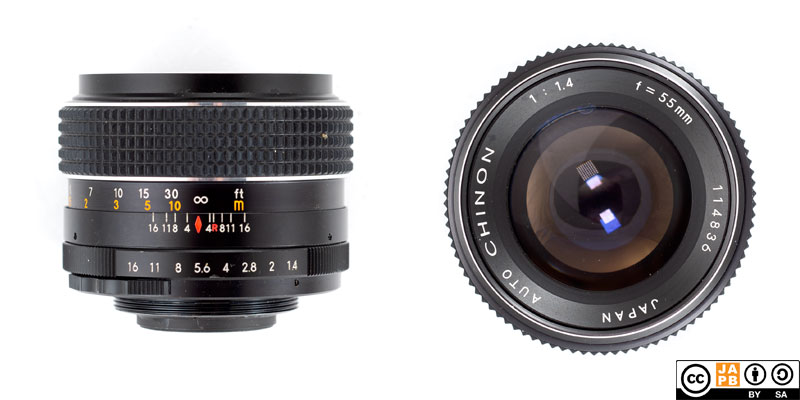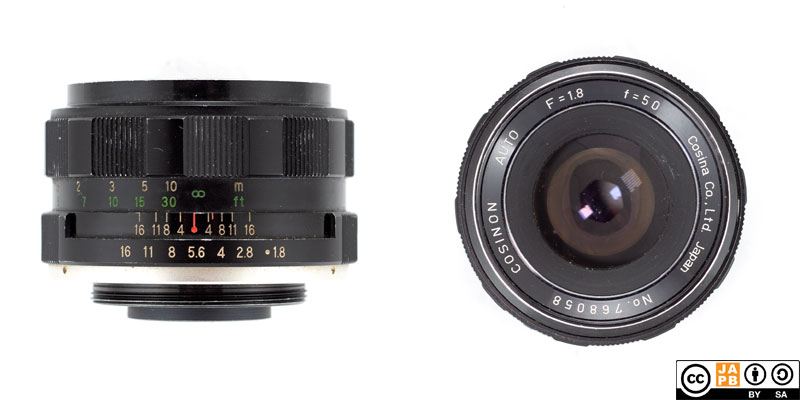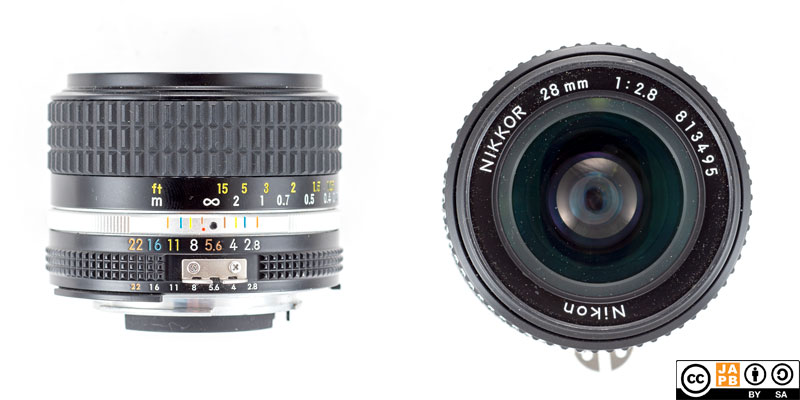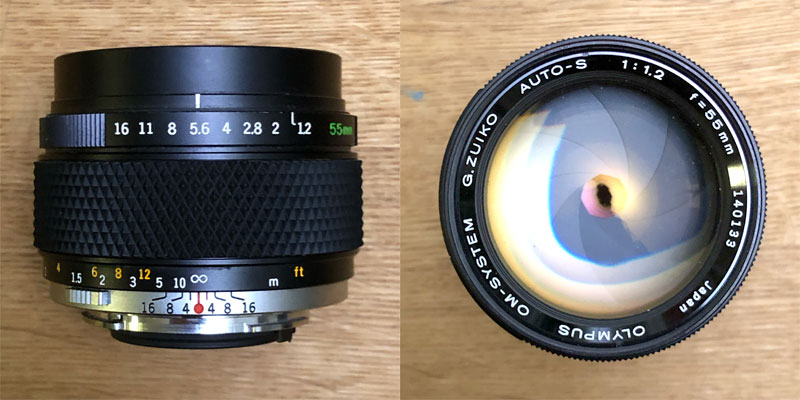Pekka Buttler, 03-06/2023
• n.B! The material for this article was gathered while I was investigating Meyer-Optik Görlitz names. As it would be a shame to keep it for myself, I will instead publish these…
• The list is far from complete, as there are simply too many… instead of aiming for completing the article before publishing, I will continue updating the article as I go…
From trade names to corporate names…
Japanese companies, especially those founded before modern times, have traditionally had very descriptive names – names that clearly state what the company is all about. For instance ‘Nikon’ was founded as Nippon Kōgaku Kōgyō Kabushikigaisha (日本光学工業株式会社 “Japan Optical Industries Corporation“) and Canon was founded as Seikikōgaku kenkyūsho (Jpn. 精機光学研究所, Precision Optical Industry Co. Ltd.)
As Japanese companies started to orient themselves towards export markets, they would typically generate a new brand name to help sell their wares. Such names were typically selected with the main purpose to feel comfortable on the tongues of Anglo-Americans and Europeans, while often also having a clearly oriental feel. Hence came trade names such as Pioneer, Nissan, Sony, Daihatsu, Kenwood (and many more).
When the Japanese photo (cameras and lenses) companies started their foray onto the international markets, they did something very similar, i.e. got themselves trade names that would suit their intended buyers. Interestingly, many of those Japanese companies that were into both businesses (cameras and lenses) typically chose one trade name (brand) for their cameras and another for their lenses. In the age of common mounts (like the Leica thread mount and the m42 mount), this made perfect sense: Nikon meant a Nikon camera; Nikkor meant a Nikon lens usable on any compatible body.
As major Japanese companies are today inherently global, many companies have since adopted such trade names as their legal corporate names.
Asahi/Pentax and Takumar lenses
The company we today know as Pentax was founded in 1919 as Asahi Kogaku Kogyo G.K by Kumao Kajiwara. The company started selling its cameras using Asahi-derived names (such as Asahiflex), and only adopted the name Pentax (a contraction of “Pentaprism Reflex“) in 1957.

The name Takumar, used since 1952, was chosen in honour of the founder’s younger brother Takuma Kajiwara who was a prominent painter/photographer. Asahi/Pentax stopped referring to all their lenses as Takumar in the 1970s, but the name Takumar made sporadic reapperances into the 1980s.
Canon and Serenar
The origins of Canon lie with Precision Optical Instruments Laboratory, founded in 1933 by Messrs Mitarai, Yoshida, Uchida and Maeda. The company introduced its prototype for a Leicalike camera in 1934. That prototype camera was named Kwanon, a contemporary translitteration of the buddhist goddess of mercy Guanyin (backstory here). That prototype was developed further and launched onto the markets as the Hansa Canon in 1936. The laboratory was incorporated as Seikikōgaku kenkyūsho; Jpn. 精機光學研究所, Precision Optical Industry Co. Ltd. in 1937. And changed its name to Canon Camera Co., Inc. in 1947.
Importantly, Canon was originally a camera manufacturer and early Canon Cameras were sold with other Japanese-manufactured optics attached (notably, the Hansa Canon was originally sold with a Nikkor 50 mm lens attached). When Canon in 1946 started marketing interchangeable lenses for cameras – both their own and other manufacturers’ – they named their lenses Serenar. The name was chosen after an in-house naming contest in reference to calmness and tranquility. The name Serenar disappeared from Canon lenses starting in 1954.
Chinon
Chinon Industries Inc. (originally Sanshin Seisakusho) was founded in 1948 by Chino Hiroshi in the city of Chino (Nagano prefecture), originally as a subcontractor to the optics industry.

In the late 1960s, Chinon started manufacturing SLRs, but although ‘Chinon’ lenses were relatively common, Chinon Industries did not manufacture SLR lenses, instead sourcing their lenses from other Japanese manufacturers (including Tomioka) and rebranding them as ‘Chinon’.
Cosina (and Cosinon lenses)
Cosinon is the name under which Cosina (株式会社コシナ, Kabushiki-gaisha Koshina, originally Kabushiki Kaisha Nikō) used to market its SLR lenses under. While Cosina used to market its lenses and cameras under its own brand, Cosina seemed to disappear from the market in the during the 1980s.

Even so, Cosina never left the optics business. Instead Cosina specialised: first as an OEM manufacturer for several Japanese major brand companies; lately as the owner of the Voigtländer trademark and manufacturer of all recent Voigtländer gear (cameras and optics).
Fuji, Fujica cameras and Fujinon lenses
Fujifilm, previously Fuji Photo Film was originally founded in 1934 as Fuji Shashin Film K.K. (富士写真フィルム㈱), which was itself an offshoot of Dai-Nippon Celluloid K.K. Fuji started developing optical glass for military use during WW2. Fuji started camera production in 1948 and until the 1980s Fuji cameras were sold under the name Fujica (Fuji Ca(mera)), whereas lenses were sold under the name Fujinon.
Konica and Hexanon lenses
Konica is the oldest camera manufacturer in Japan and went through more name changes in its early days than pays to count off. However, in 1921 the company was renamed G.K. Konishiroku Honten (合資会社小西六本店) and here the fixation with the number six (roku) is already evident. The name Konica – originally chosen for a 35 mm rangefinder – is generated similarly as Leica: Konishiroku Camera
Ever since the 1960s Konica interchangeable lenses have been marketed under the name Konica Hexanon – another allusion to the number six.
Mamiya (Sekor)
Mamiya, originally Mamiya Kōki Seisakusho (マミヤ光機製作所, Mamiya Optical Works) was founded 1940 in Tokyo by Mamiya Seiichi and Sugawara Tsunejirō. Throughout the war Mamiya produced a highly successful 6×6 folding camera (the Mamiya Six). After the war, Mamiya was among the Japanese optical companies making the fastest recovery, and in 1947 – to secure its access to lenses – Mamiya bought an optical company in Setagaya – another district of Tokyo. As camera-wiki reports “The name Sekor that appears on most Mamiya lenses comes from Setagaya Kōki, with r probably for renzu (レンズ, lens)”.
While the Setagaya Kōki subsidiary was fully integrated in 1963, the name ‘Sekor’ remained on Mamiya lenses for both 35 mm and medium format lenses far beyond that (the one/two letter acronym after ‘Sekor’ typically indicates the family of cameras the lens was made for).
Nikon and Nikkor lenses
Nikkor is the trade name used by the Nikon corporation (originally 株式会社ニコン / Nippon Kōgaku Kōgyō Kabushikigaisha, or Japan Optical Industries Co., Ltd.) for its lenses. Traditionally Nikon reserved the Nikkor name for its first-rate lenses (for instance the 1970’s budget series E were not granted the use of the hallowed Nikkor name), but today you find Nikon referring even to their compact cameras’ integrated lenses as ‘Nikkor’

The origins of the name Nikkor are – however – less glorious than one might think. It is simply a the combination of “NIKKO” – the common abbreviation of Nippon Kogaku K.K. – which also means daylight/sunlight – with an extra letter ‘R’ to make it sound nicer to the western customer.
Petri
Petri Camera K.K. (Originally Kuribayashi Seisakusho (栗林製作所)) is in many ways the quintessential YAJCM (Yet Another Japanese Camera Manufacturer) and the company’s trajectory in many ways embodies that of a large part of the post-war Japanese camera industry (that part that dropped out of the camera business before the end of the Cold War). Unlike some other Japanese manufacturers, the name Petri was used both for lenses and cameras, except…
The name ‘Orikkor’ sometimes appears alongside ‘Petri’ or ‘Kuribayashi’ on some Petri lenses, and it seems as if Petri might have flirted with launching its own lens brand.
Ricoh and Rikenon lenses
Rikenon is the trade name used by Ricoh (Riken Kōgaku Kōgyō K.K. (理研光学工業㈱, meaning Riken Optical Industries Co., Ltd.) for use with its lenses.
Compared to many other major Japanese Camera manufacturers, Ricoh was more strongly geared towards non-interchangeable lens cameras (including TLR’s and compacts), therefore interchangeable Rikenon lenses are not as commonplace as many others (e.g. Takumars or Rokkors). Today (2022) the name Ricoh is less visible in the camera industry, but is nevertheless the company that owns the Pentax brand (All recent Pentax Cameras and lenses are Ricoh’s)
Minolta and Rokkor lenses
Rokkor is the trade name used for lenses by the Chiyoda Kōgaku Seikō K.K. (千代田光学精工㈱, meaning Chiyoda Optics and Precision Industry Co., Ltd.), more commonly known as Minolta.

According to legend, the name Rokkor was chosen in honour of Mount Rokko – a high peak visible from Chiyoda’s Mukogawa factory. Given that the Rokkor name was coined in 1940, it is more than likely that the name (especially its -r ending) was chosen in emulation of the then already successful Nikkor brand.
Tokina
Tokina (originally Tokyo Optical Equipment Manufacturing) was founded in 1950 to act as an OEM manufacturer, initially making projector lenses but quickly diversifying into manufacturing camera lenses for other companies. Herein Tokina’s OEM business was always aimed at a) manufacturing lenses for sale by re-branders (companies selling others’ product under their own brand, such as Vivitar, Soligor…), and b) taking care of lens manufacturing for many major brand-operations (including Konica).
From the beginning, Tokina sometimes also sold its lenses under its own brand (first as Tokyo Koki, later under the name Tokina).
Tomioka and Tominon lenses
Tomioka Kōgaku K.K. (冨岡光学㈱, Tomioka Optical Co., Ltd.) is best known as a first-class OEM manufacturer of various on-brand lenses (including, but not limited to, Yashica and Carl Zeiss). Importantly, Tomioka was not merely an OEM manufacturer (manufacturing lenses according to major brand designs), but also an OEM designer (designing lenses, offering them to major brands, then manufacturing them). Most Tomioka designed&manufactured lenses do in no way show their provenance, but the name ‘Tomioka’ sometimes appears alongside other brand names (just search eBay for “Yashinon Tomioka”. More importantly, during a period in the 1960s, Tomioka also sold their photographic and enlarger lenses direct to customers under the Tominon name (one example shown here).
Topcon and Topcor lenses
Topcon was the foreign trade name adopted by Tokyo Kogaku Kikai Kabushikikaisha (a.k.a. Tokyo Kogaku), and Topcor was the trade name for Topcon interchangeable lenses.
Importantly, Topcon/Topcor lenses are commonly available in two mounts: The older Topcon RE mount (which is an extension of the Exakta mount) and the newer, proprietary Topcon UV mount
Yashica, Yashinon and Yashikor
Yashinon and Yashikor were two trade names used for lenses by the Yashica Company (originally Yashima Seiki Company). Yashica would at times offer both lenses simultaneously, and the rule of thumb is that the Yashikor was always the budget option (akin to Yashica ML and Yashica DSB lenses at a later stage.)
Olympus and Zuiko lenses
While referring to deities is not uncommon in corporate branding, few companies have made as strong a tradition of such names as that of K.K. Takachiho Seisakusho (㈱高千穂製作所, meaning Takachiho Works Co., Ltd.). This company launched its Olympus-named cameras (Mt. Olympus being the seat of the gods according to Greek mythology) and accompanying Zuiko (auspicious/divine light) lenses in 1936.

While Olympus Optical (officially renamed as such in 1949) typically used the name Zuiko on all its lenses, the name is most prominent when used on interchangeable lenses such as the Zuiko lenses for Olympus’ OM-system SLR’s.